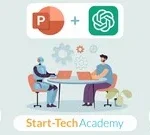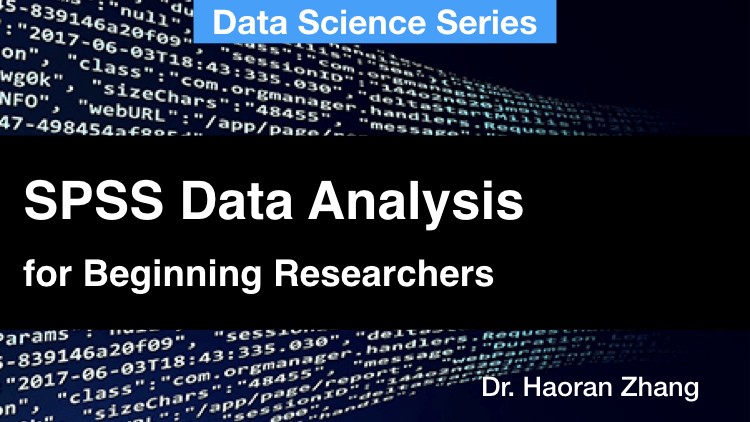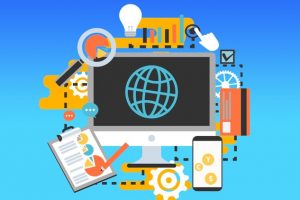SPSS Data Analysis for Beginning Researchers Course – learn SPSS
Beginners/newbies: Working on your first data analysis but don’t know where to start? This step-by-step guide can help.
What you’ll learn
SPSS Data Analysis for Beginning Researchers Course – learn SPSS
- Explain the basic concepts of statistics and different levels of data measurement.
- Determine the appropriate methods of analysis for a particular type of data.
- Prepare and clean the data for analysis.
- Conduct common statistical analyses to the data.
- Report the results of hypothesis tests in the appropriate way.
- Avoid some of the common pitfalls in data analysis.
- Be equipped with the knowledge and skills to analyze your own research data.
Requirements
- This course is for beginning researchers and therefore little prior knowledge in statistics, data analysis, or SPSS is assumed. I will cover the necessary knowledge in the videos. I will also include links to statistics references in case you want to learn more.
- The student should have a copy of SPSS (version 20 or later recommended).
Description
Thank you for checking in SPSS Data Analysis for Beginning Researchers.
Who is this course for?
As the title implies, this course is for people working on their very first research projects (i.e. beginners/newbies), including but not limited to:
- Students working on their research papers or dissertations
- Beginning researchers with a non-technical background
- Anyone curious about data analysis
What is so difficult about data analysis?
Many people find data analysis difficult and with good reasons. Data analysis is difficult because it is not a single discipline. It is multi-disciplinary, which means that it requires integrated knowledge from different fields in order to do it right. Specifically, to conduct data analysis for your research you need:
- Knowledge in the data analysis software (e.g. SPSS, Excel, R, etc.)
- Knowledge in statistics concepts
- Knowledge in research methods
- Experience and skills working with data
What you need is not only knowledge in separate fields, but also experience and skills integrating this knowledge together to deal with real-life data.
However, beginning researchers, by definition, have very little of these knowledge, experience, and skills. For example:
- You may know how to use the data analysis software, but you don’t know what method of analysis to use because you are not familiar with the statistics concepts.
- May know some statistics, but you may not know how to calculate the statistics on the computer.
- You may have knowledge in both statistics and data analysis software, but you are not sure what analysis to conduct in order to fulfill the research needs.
- You may have knowledge in statistics, software, and research, but you may not have the experience in actually handling data, and you are stuck dealing with practical issues here and there (such as missing and invalid data).
How may this course help?
This course is designed to be concise and practical. I am not attempting to tell you everything about statistics, SPSS, data analysis, and research – that would make your learning journey unnecessarily difficult. Instead, I am going to guide you, in a structured and practical way, through the minimal set of knowledge and skills you would need to analyze your own data. This course will not make you an expert in statistics, SPSS, data analysis, and research, but it will help you finish your own data analysis.
This is to be achieved by the following:
- Background knowledge. Each section of the course begins with a brief introduction to the minimal set of necessary statistics concepts you need.
- Practical demonstrations. All the videos are example-based. In each video, I show you how to conduct a practical data analysis task. These tasks are carefully selected from a list of most common analyses that you are likely to conduct.
- Experience sharing. In addition to statistics and SPSS, I also share a lot of my own experience doing research and data analysis, including how to deal with the most common issues while working with data, avoid the common mistakes and misunderstandings, and work around some annoying bugs in SPSS.
- Key points. Key points are highlighted throughout the video and also recapped at the end of the videos.
- Exercise. There is an exercise at the end of each section. This helps you apply what you have learned in the previous videos. There are also questions that prompt you to think deeper about what you are doing. The exercise problems have been used for a few years in my own offline classes so they are proven to be helpful to students. While appropriate, a separate video is dedicated to demonstrating the answers to these exercise problems.
- References. For those who would like to dig deeper into the statistics concepts, I have included links to useful references for your pursue.
So, how may I learn effectively in this course?
You may do the following for each section:
- Watch the videos. Take notes while necessary.
- Complete the exercise on your own. Knowing is not enough. We must apply!
- If you forget some of the details, refer back to the previous videos.
- After attempting the exercise, watch the next video for answers. Watch my steps carefully and compare with yours. In case of any difference, ask yourself which way is better, and why.
- Last but not least, apply the techniques to your own data.
That’s all for the introduction. Happy learning!
Who this course is for:
- Students struggling with their research papers or dissertations
- Beginning researchers with a non-technical background
- Anyone curious about data analysis
- Learn Spanish – Conversational Spanish Course











Add Comment